
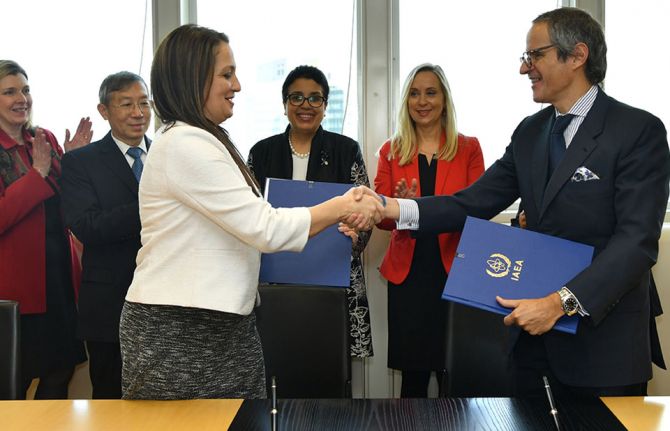
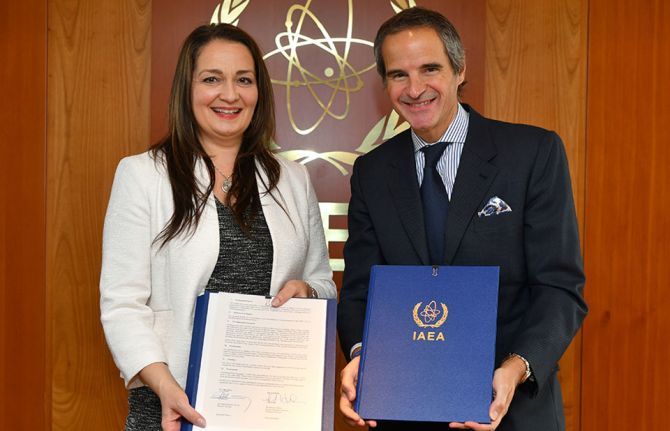
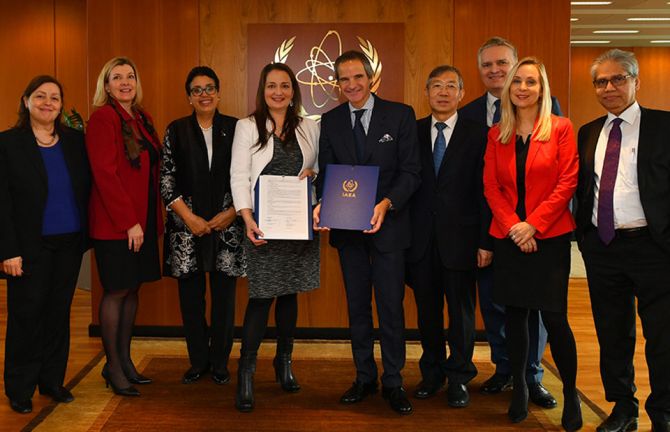
Press Release
UNAIDS and IAEA forge a powerful partnership against the interlinked diseases of cervical cancer and HIV
07 February 2020 07 February 2020GENEVA, 7 February 2020—UNAIDS and the International Atomic Energy Agency (IAEA) have joined forces to increase action against cervical cancer and HIV. In a memorandum of understanding signed following an event to mark World Cancer Day at the headquarters of IAEA in Vienna, Austria, the two organizations pledged to scale up and expand services for adolescent girls and women affected by the two diseases.
Cervical cancer and HIV are inextricably linked. Cervical cancer is the most common cancer among women living with HIV, who are up to five times more likely to develop the disease, and women infected with certain types of the human papillomavirus also face a double risk of acquiring HIV.
"How is it fair that 90% of girls in high-income countries have access to the human papillomavirus vaccine, yet in low- and middle-income countries just 10% have access?" said Winnie Byanyima, Executive Director of UNAIDS. "Like HIV, cervical cancer is a disease of health, gender and socioeconomic inequalities for women and girls all over the world. Services must be expanded and integrated as an investment in the lives of women and girls and to uphold their right to health.”
In 2018, around 311 000 women died of cervical cancer, 85% of whom were in low- and middle-income countries, where vaccination, screening and treatment programmes are limited. The high mortality rate from cervical cancer globally could be greatly reduced by stepping up action in those countries.
Around 70% of women who develop cervical cancer require radiotherapy to effectively treat the disease; however, IAEA estimates that one third of low- and middle-income countries do not offer adequate radiation medicine services to meet patient needs. In Africa, 28 countries do not have a single radiotherapy unit. Part of IAEA’s work is to help countries in the use of nuclear and radiation medicine to treat cervical and other types of cancer.
“Cervical cancer is one of those cancers that are perfectly treatable and curable if you live in Vienna, Buenos Aires, Rome or Paris,” said IAEA Director General Rafael Mariano Grossi. “If you happen to live in a country with limited access to radiotherapy that is something that can kill you.” He added that the partnership with UNAIDS was very important to maximize efforts in the important mission to help countries tackle cancer.
As part of the new agreement, UNAIDS and IAEA will work together to support national strategies and programmes to develop integrated workplans for HIV and cervical cancer. In addition, they will mobilize resources to expand prevention, diagnosis and treatment services, train health professionals and raise awareness around the links between HIV and cervical cancer.
UNAIDS
The Joint United Nations Programme on HIV/AIDS (UNAIDS) leads and inspires the world to achieve its shared vision of zero new HIV infections, zero discrimination and zero AIDS-related deaths. UNAIDS unites the efforts of 11 UN organizations—UNHCR, UNICEF, WFP, UNDP, UNFPA, UNODC, UN Women, ILO, UNESCO, WHO and the World Bank—and works closely with global and national partners towards ending the AIDS epidemic by 2030 as part of the Sustainable Development Goals. Learn more at unaids.org and connect with us on Facebook, Twitter, Instagram and YouTube.
Press centre
Download the printable version (PDF)


Press Release
The Business Alliance to End AIDS by 2030 is announced at the World Economic Forum
23 January 2020 23 January 2020DAVOS/GENEVA, 23 January 2020—The Business Alliance to End AIDS by 2030, a public–private coalition co-hosted by UNAIDS and GBCHealth, was announced today in Davos, Switzerland, on the margins of the World Economic Forum Annual Meeting.
The Business Alliance to End AIDS brings together forward-looking companies to strengthen cross-sector collaboration, build on common values and create spaces for effective collaboration. It aims to provide businesses with the necessary tools and support needed from public sector partners to help realize the goal of ending AIDS by 2030.
Business has been and continues to be essential to the AIDS response, from challenging the stigma surrounding HIV, building innovative partnerships among companies across industries and implementing diagnosis, treatment and prevention programmes within workplaces and surrounding communities. However, these models need to operate to scale to meet the gaps in investment and implementation needed to meet the target of ending AIDS by 2030.
“Today, every single company must make a positive contribution to the societies they serve—this is not an option, this is an imperative. Beyond reaching their economic objectives, companies must deliver social and environmental impact. The private sector has a key role to play in the multisectoral response to HIV. Businesses must ensure that their employees, their suppliers and communities receive life-saving HIV treatment, prevention and care programmes. Together, we can end AIDS by 2030,” said Winnie Byanyima, Executive Director of UNAIDS.
“Realizing a world free of AIDS is beyond the reach of one company. Business as usual will not achieve the Sustainable Development Goals, nor will innovation by a few pioneers. This agenda will require collaboration across sectors, supply chains and economic systems, as well as innovative partnerships with governments and civil society. We at Anglo American are committed to be part of the Business Alliance to End AIDS by 2030 and urge other businesses to join our collective efforts,” said Nolitha Fakude, Chairperson of Anglo American’s Management Board in South Africa.
“Responding to HIV matters to business, and businesses have been leaders in the global AIDS response for over two decades. Business innovations in products and services, relationships with employees, consumers and policymakers, core capabilities and logistics, data analytics, marketing and financial resources can all help to fill the gaps in publicly funded HIV testing, prevention and treatment programmes. Forward-thinking businesses are needed to help develop holistic solutions and manage risk. We are at a crossroads. The future will be determined by what we do today,” said Nancy Wildfeir-Field, President of GBCHealth.
The Business Alliance to End AIDS by 2030 will act as a vehicle and a collective voice to disseminate best practices through public platforms, their companies and their respective supply chains. In addition, it will serve as a collective body to help shape regulations and policies that support HIV prevention and treatment programmes and end HIV-related stigma and discrimination.
For further information on the Business Alliance to End AIDS by 2030 and how you can join, please contact Frauke Joosten at joostenvegliof@unaids.org.
UNAIDS
The Joint United Nations Programme on HIV/AIDS (UNAIDS) leads and inspires the world to achieve its shared vision of zero new HIV infections, zero discrimination and zero AIDS-related deaths. UNAIDS unites the efforts of 11 UN organizations—UNHCR, UNICEF, WFP, UNDP, UNFPA, UNODC, UN Women, ILO, UNESCO, WHO and the World Bank—and works closely with global and national partners towards ending the AIDS epidemic by 2030 as part of the Sustainable Development Goals. Learn more at unaids.org and connect with us on Facebook, Twitter, Instagram and YouTube.
Press centre
Download the printable version (PDF)

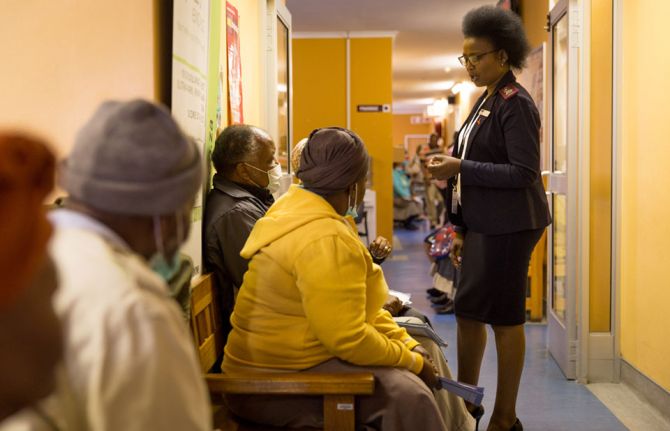
Press Release
Health should not be a privilege for the rich—the right to health belongs to everyone
20 January 2020 20 January 2020Gaps in public financing for health can be met by eliminating tax dodging and implementing progressive taxation; health and development must be protected from the growing impact of debt
DAVOS/GENEVA, 21 January 2020—UNAIDS is calling on governments to ensure that the right to health is realized by all by prioritizing public investments in health. At least half of the world’s population cannot access essential health services. Every two minutes a woman dies while giving birth. Among the people being left behind are women, adolescents, people living with HIV, gay men and other men who have sex with men, sex workers, people who inject drugs, transgender people, migrants, refugees and poor people.
“The right to health is eluding the poor and people trying to lift themselves out of poverty are being crushed by the unacceptably high costs of health care. The richest 1% benefit from cutting-edge science while the poor struggle to get even basic health care,” said Winnie Byanyima, Executive Director of UNAIDS.
Nearly 100 million people are pushed into extreme poverty (defined as living on US$ 1.90 or less a day) because they have to pay for health care, and more than 930 million people (around 12% of the world’s population) spend at least 10% of their household budgets on health care. In many countries, people are denied health care or receive poor quality health care because of unaffordable user fees. Stigma and discrimination denies poor and vulnerable people, especially women, their right to health.
Every week, 6000 young women around the world become infected with HIV. In sub-Saharan Africa, four out of five new HIV infections among adolescents are among adolescent girls and AIDS-related illnesses are the biggest killer of women of reproductive age in the region. Despite significant progress in reducing AIDS-related deaths and new HIV infections, there were 1.7 million new HIV infections in 2018 and nearly 15 million people are still waiting to receive HIV treatment.
“Publicly financed health care is the greatest equalizer in society,” said Ms Byanyima. “When health spending is cut or inadequate, it is poor people and people on the margins of society, especially women and girls, who lose their right to health first, and they have to bear the burden of caring for their families.”
Delivering health care for all is a political choice that too many governments are not making. Thailand has reduced mortality rates for children under the age of five years to 9.1 per 1000 live births, while in the United States of America the rate is 6.3 per 1000 live births, even though Thailand’s gross domestic product per capita is about one tenth of that of the United States. Thailand’s progress has been achieved through a publicly financed health-care system that entitles every Thai citizen essential health services at all life stages and leaves no one behind.
South Africa had just 90 people on antiretroviral therapy in 2000, but in 2019 had more than 5 million on HIV treatment. South Africa now has the largest HIV treatment programme in the world. Countries such as Canada, France, Kazakhstan and Portugal have strong publicly financed health systems, yet some other richer countries do not.
Health investments in many countries remain very low compared to their gross domestic product. The United Nations Conference on Trade and Development estimates that developing countries lose between US$ 150 billion and US$ 500 billion every year owing to corporate tax avoidance and profit shifting by big companies. If this lost money were invested in health, health expenditure could triple in low-income countries and could double in lower-middle-income countries. The race to the bottom on corporate tax cheats denies developing countries of much needed revenue and robs ordinary people of vital health services. The countries of the Economic Community of West African States lose an estimated US$ 9.6 billion each year to numerous tax incentives.
“It is unacceptable that rich people and big companies are avoiding taxes and ordinary people are paying through their ill health,” said Ms Byanyima. “Big companies must pay their fair share of taxes, protect employee rights, provide equal pay for equal work and provide safe working conditions for all, especially women.”
Debt is posing a serious threat to Africa’s economy, health and development, resulting in big cuts in social spending to ensure debt repayment. According to the International Monetary Fund, as of April 2019 half of low-income countries in Africa were either in debt distress or at a high risk of being so. Beyond low-income countries, in Zambia there was a 27% drop in health-care investments and an increase of debt servicing by 790% between 2015 and 2018. Similar trends were seen in Kenya, where debt servicing increased by 176% and health investments declined by 9% between 2015 and 2018. “There is an urgent need to manage debt in ways that protects people’s health. That means ensuring new financing focuses on social investments, debt repayments being halted for a period if needed to allow economic recovery and debt restructuring under a coordinated mechanism to protect spending on HIV, health and development,” said Ms Byanyima.
A major factor of ill health is the denial of human rights. According to the World Bank, more than one billion women lack legal protection against domestic violence and close to 1.4 billion women lack legal protection against domestic economic violence. In at least 65 countries, a same-sex sexual relationship is a crime. In recent years in some countries, crackdowns and restrictions on lesbian, gay, bisexual, transgender and intersex people have increased. Sex work is a criminal offence in 98 countries. Forty-eight countries and territories still maintain some form of HIV-related restrictions on entry, stay and residence. A recent study of sex work policies in 27 countries concluded that those that decriminalized some aspects of sex work have significantly lower HIV prevalence among sex workers.
In 91 countries, adolescents require the consent of their parents to take an HIV test and in 77 countries they require the consent of their parents to access sexual and reproductive health services, creating barriers to protect young people from HIV infection. One of the consequences of this is that the HIV incidence rate among young women and girls in eastern and southern Africa is twice that of their male peers.
“In the next decade, we can end AIDS as a public health threat and achieve universal health coverage. Governments must tax fairly, provide publicly funded quality health care, guarantee human rights and achieve gender equality for all—it is possible,” said Ms Byanyima.
UNAIDS is participating in several events at the 2020 World Economic Forum Annual Meeting in Davos, Switzerland, to highlight the need for governments to fulfil their commitments to realize universal health coverage and ensure that no one is left behind.
UNAIDS
The Joint United Nations Programme on HIV/AIDS (UNAIDS) leads and inspires the world to achieve its shared vision of zero new HIV infections, zero discrimination and zero AIDS-related deaths. UNAIDS unites the efforts of 11 UN organizations—UNHCR, UNICEF, WFP, UNDP, UNFPA, UNODC, UN Women, ILO, UNESCO, WHO and the World Bank—and works closely with global and national partners towards ending the AIDS epidemic by 2030 as part of the Sustainable Development Goals. Learn more at unaids.org and connect with us on Facebook, Twitter, Instagram and YouTube.
Press centre
Download the printable version (PDF)

Press Release
UNAIDS Executive Director outlines her vision to the UNAIDS Board
13 December 2019 13 December 2019GENEVA, 13 December 2019—Winnie Byanyima, speaking at the first meeting of the UNAIDS Programme Coordinating Board (PCB) since her appointment as the UNAIDS Executive Director, has outlined her priorities for 2020. Noting that, “The global response to HIV and the Joint Programme provide one of the strongest examples of the value of multilateralism and global solidarity,” she added that, “The year 2020 provides us with an opportunity to reflect upon how the Joint Programme can work even better.”
The Executive Director of UNAIDS said that UNAIDS would step up its work in four areas: women and girls in Africa; defending the human rights of everyone; putting science, innovation and technology in the hands of people; and financing the global AIDS response.
Ms Byanyima noted the enormous progress that has been made in the AIDS response, but told the meeting that, despite major progress by some countries and some regions, the world will overall not reach the target of a 75% reduction in new HIV infections by the end of 2020. The 45th meeting of the PCB, which concluded yesterday, underlined the importance of countries increasing investment in HIV prevention, with no less than one quarter of HIV spending to be invested in prevention programmes.
During the meeting, the PCB also requested a review of the UNAIDS 2016–2021 Strategy, its implementation and the results obtained. The results of the review will be considered in a wide-ranging consultation and will be presented at the next meeting of the PCB, in June 2020, as part of the development of the next UNAIDS strategy.
“The process for the development of the next strategy will be deeply data-driven and consultative, involving UNAIDS staff, our Cosponsors, civil society, people living with and affected by HIV, young people, faith institutions, ministers of health, finance and gender and parliamentarians, scientists, donors and the private sector,” said Ms Byanyima.
In her opening address to the PCB, Ms Byanyima spoke about the challenges and opportunities that lie ahead in the less than 13 months until the end of 2020―when a set of HIV prevention, treatment and other targets should be reached―and the less than 11 years until 2030, the date by which the world has committed to end AIDS.
Ms Byanyima said that her priority would be UNAIDS’ greatest asset―its staff. “Much has been done, but there is still a long way to go. Work must continue to restore trust among staff and with external partners, and to change the culture so that UNAIDS never tolerates any kind of abuse of power, such as harassment, sexual misconduct or bullying, and UNAIDS encourages staff to feel safe and to speak up.”
The PCB, noting the recent Joint Inspection Unit review of the management and administration of UNAIDS, welcomed Ms Byanyima’s commitment to establish an annual PCB agenda item to cover internal and external audits, ethics and other topics on accountability.
In paying tribute to Gunilla Carlsson, the UNAIDS Deputy Executive Director, Management and Governance, who will be leaving UNAIDS in early 2020, Ms Byanyima thanked her for guiding UNAIDS through the recent reputational crisis and facilitating the leadership transition. Wishing Ms Carlsson well in her future endeavours, she praised Ms Carlsson for driving forward critical reforms in management and governance, ensuring protection and support for staff members who have suffered from harassment and abuse of authority and leading the implementation of the UNAIDS Gender Action Plan and the Management Action Plan.
The PCB’s nongovernmental organization delegation put forward a report on universal health coverage, highlighting the role of communities as critical partners and stakeholders in the design and implementation of universal health coverage, and a request was made by the PCB for UNAIDS to continue to support countries to ensure that comprehensive HIV services remain or become available and accessible under a universal health coverage programme.
The last day of the meeting was a full-day thematic session on reducing the impact of AIDS on children and youth, which raised alarm that progress in eliminating new HIV infections among infants and getting children from 0–14 years old living with HIV on effective HIV treatment and thriving has slowed worryingly. The PCB engaged with panels on the importance of youth leadership in shaping the HIV response towards holistic approaches.
Representatives of United Nations Member States, international organizations, civil society and nongovernmental organizations attended the three-day meeting, which was chaired by China, with the United States of America serving as Vice-Chair and Belarus as Rapporteur.
The PCB’s decisions can be found at https://www.unaids.org/en/whoweare/pcb/45.
UNAIDS
The Joint United Nations Programme on HIV/AIDS (UNAIDS) leads and inspires the world to achieve its shared vision of zero new HIV infections, zero discrimination and zero AIDS-related deaths. UNAIDS unites the efforts of 11 UN organizations—UNHCR, UNICEF, WFP, UNDP, UNFPA, UNODC, UN Women, ILO, UNESCO, WHO and the World Bank—and works closely with global and national partners towards ending the AIDS epidemic by 2030 as part of the Sustainable Development Goals. Learn more at unaids.org and connect with us on Facebook, Twitter, Instagram and YouTube.


Press Release
Sri Lanka eliminates vertical transmission of HIV and syphilis
13 December 2019 13 December 2019GENEVA/BANGKOK, 13 December 2019—UNAIDS congratulates Sri Lanka for achieving the elimination of vertical transmission of HIV and congenital syphilis. “Sri Lanka’s remarkable achievement gives me hope and shows that change is possible. It is clear that when a country ensures that services are accessible and stigma-free for women, including for women living with or affected by HIV, results follow that benefit women’s health, their children’s health and society as a whole,” said Winnie Byanyima, UNAIDS Executive Director.
According to the Ministry of Public Health of Sri Lanka, in 2018 all pregnant women diagnosed with HIV started antiretroviral therapy and 97% of pregnant women diagnosed with syphilis received treatment. The country has not reported any case of mother-to-child transmission of HIV since 2017 and the rate of congenital syphilis has been reduced to less than 50 cases per 100 000 live births in 2017 and 2018.
“The elimination of mother-to-child transmission of HIV is the result of strong political commitment, a successful multisectoral integrated approach built upon the foundations of the public health system and technical expertise,” said Anil Jasinghe, Director General of Health Services in Sri Lanka.
Sri Lanka becomes the fourth country in the Asia–Pacific region after Thailand, Malaysia and the Maldives to be validated for eliminating vertical transmission of HIV and congenital syphilis.
UNAIDS
The Joint United Nations Programme on HIV/AIDS (UNAIDS) leads and inspires the world to achieve its shared vision of zero new HIV infections, zero discrimination and zero AIDS-related deaths. UNAIDS unites the efforts of 11 UN organizations—UNHCR, UNICEF, WFP, UNDP, UNFPA, UNODC, UN Women, ILO, UNESCO, WHO and the World Bank—and works closely with global and national partners towards ending the AIDS epidemic by 2030 as part of the Sustainable Development Goals. Learn more at unaids.org and connect with us on Facebook, Twitter, Instagram and YouTube.
Contact
UNAIDS GenevaAnne-Claire Guichard
tel. +41 22 791 2321
guicharda@unaids.org
UNAIDS Bangkok
Michela Polesana
tel. +66 9445194092
polesanam@unaids.org
UNAIDS Media
tel. +41 22 791 42 37
communications@unaids.org
Press centre
Download the printable version (PDF)
Region/country

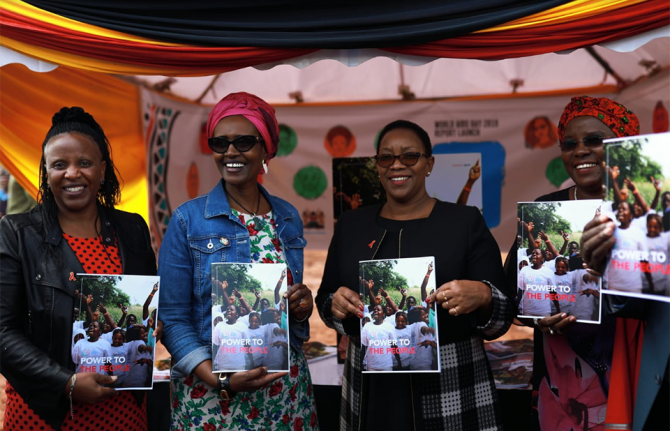
Press Release
Ensuring that people and communities have the power to choose, to know, to thrive and to demand is the key to ending AIDS
26 November 2019 26 November 2019Game-changing approaches, such as medicine to prevent HIV (PrEP), integration of contraceptive services with HIV testing, viral load suppression (U = U), harm reduction, and comprehensive sexuality education, give people the power to protect themselves from HIV and, for people living with HIV, the power to thrive
NAIROBI/GENEVA, 26 November 2019—A new report by UNAIDS, Power to the people, released ahead of World AIDS Day, shows that where people and communities living with and affected by HIV are engaged in decision-making and HIV service delivery, new infections decline and more people living with HIV gain access to treatment. When people have the power to choose, to know, to thrive, to demand and to work together, lives are saved, injustices are prevented and dignity is restored.
“When people and communities have power and agency, change happens,” said Winnie Byanyima, Executive Director of UNAIDS. “The solidarity of women, young people, gay men and other men who have sex with men, sex workers, people who use drugs and transgender people has transformed the AIDS epidemic—empowering them will end the epidemic.”
The report was launched in Kenya on 26 November by the Executive Director of UNAIDS, the Cabinet Secretary of Health of Kenya and community representatives. It shows that significant progress has been made, particularly in expanding access to treatment. As of mid-2019, an estimated 24.5 million of the 37.9 million people living with HIV were accessing treatment. As treatment roll-out continues, fewer people are dying of AIDS-related illnesses.
“The partnership between government and civil society, together with the meaningful involvement of communities, has allowed us to significantly reduce new HIV infections and AIDS-related deaths,” said Sicily Kariuki, Cabinet Secretary for Health in Kenya. “Communities are the very centre of the AIDS response and are critical to ending AIDS.”
Progress in reducing HIV infections, however, is mixed and 1.7 million people were newly infected with the virus in 2018. New HIV infections declined by 28% from 2010 to 2018 in eastern and southern Africa, the region most affected by HIV. In a promising sign, the incidence rate of HIV among adolescent girls and young women aged between 15 and 24 years in the region declined from 0.8% in 2010 to 0.5% in 2018, a 42% decline. However, young women and girls still bear the brunt of new HIV infections—four out of five new HIV infections among adolescents in sub-Saharan Africa are among girls.
Outside of eastern and southern Africa, new HIV infections have declined by only 4% since 2010. Of increasing concern is the rise of new HIV infections in some regions. The annual number of new HIV infections rose by 29% in eastern Europe and central Asia, by 10% in the Middle East and North Africa and by 7% in Latin America.
“In many parts of the world, significant progress has been made in reducing new HIV infections, reducing AIDS-related deaths and reducing discrimination, especially in eastern and southern Africa, but gender inequality and denial of human rights are leaving many people behind,” said Ms Byanyima. “Social injustices, inequality, denial of citizenship rights and stigma and discrimination are holding back progress against HIV and the Sustainable Development Goals.”
Power together
The report shows that when people and communities have power and agency, change happens. Communities have put rights-based, people-centred principles at the heart of HIV programmes, ensuring that AIDS responses tackle the inequalities and injustices that fuel the epidemic.
Women and girls are the backbone of care support in their families and communities, providing unpaid and often undervalued work in caring for children, the sick, the elderly and the disabled and underpinning fragile social support systems. This must change. The involvement and leadership of communities of women is vital in the response to HIV.
“As a community leader, I am able to relate to people and understand their background better than someone from the outside. I have been living openly with HIV for 25 years, so people come to me with their issues, such as HIV-related stigma, disclosure and adherence. I have never stepped back from this role as I am part of this community,” said Josephine Wanjiru, an HIV community activist Kiandutu, Thika, Kenya.
The power to choose
Women and girls are demanding integrated contraception and HIV and sexually transmitted infection testing, prevention and care options. Almost 40% of adult women and 60% of adolescent girls (aged 15–19 years) in sub-Saharan Africa have unmet needs for modern contraception.
In several countries in sub-Saharan Africa, young women’s uptake of medicine to prevent HIV—pre-exposure prophylaxis (PrEP)—has been shown to be high in projects that integrate PrEP into youth-friendly health services and family planning clinics and when provision of PrEP is separated from treatment services.
Eleven million voluntary medical male circumcisions to prevent HIV have been performed since 2016, 4 million in 2018 alone in the 15 priority countries.
The power to know
The power to know allows people to keep themselves free from HIV or, if living with the virus, keep healthy. However, people are finding out their HIV status too late, sometimes years after they became infected, leading to a delay in starting treatment and facilitating HIV transmission. In Mozambique, for example, the average time for diagnosis after infection for men was four years.
Adherence to effective treatment suppresses the virus to undetectable levels, keeping people healthy and preventing transmission of the virus. Knowing this allows people living with HIV the opportunity to lead normal lives, confident that they are protecting their loved ones, and confronting stigma and discrimination.
HIV self-testing is now helping more people to find out their HIV status in privacy, breaking the barriers of stigma and discrimination and facilitating linkage to treatment.
Knowledge of HIV among young people is alarmingly low in many regions. In countries with recently available survey data, just 23% of young women (aged 15–24 years) and 29% of young men (aged 15–24 years) have comprehensive and correct knowledge of HIV. Studies show that comprehensive sexuality education does not lead to increased sexual activity, sexual risk-taking or higher infection rates for HIV or other sexually transmitted infections.
The power to thrive
The power to thrive is ensuring that people have the right to health, education, work and a standard of living adequate for health and well-being.
New HIV infections among children have declined by 41% since 2010 and nearly 82% of pregnant women living with HIV are on antiretroviral therapy. However, thousands of children are falling between the cracks. Half of all children born with HIV who are not diagnosed early will die before their second birthday, but, globally, only 59% of HIV-exposed children were tested before two months of age.
In 2018, 160 000 children (aged 0–14 years) became newly infected with HIV, and 100 000 children died from an AIDS-related illness. They died either because they weren’t diagnosed, or because of a lack of treatment—a shocking indictment of how children are being left behind.
Gender inequalities, patriarchal norms and practices, violence, discrimination, other rights violations and limited access to sexual and reproductive health services exacerbate the risk of HIV infection among adolescent girls and young women, particularly in sub-Saharan Africa. Each week, an estimated 6000 young women (aged 15–24 years) are infected with HIV.
In Eswatini, a recent study showed that adolescent girls and young women who experienced gender-based violence were 1.6 times more likely to acquire HIV than those who did not. The same study also showed that the economic empowerment of women and girls helped in reducing new HIV infections among women by more than 25% and increased the probability of young women and girls going back to school and finishing their education.
Key populations are being left behind
Key populations and their partners account for at least 75% of new HIV infections outside of sub-Saharan Africa and are less likely to be on treatment than others. More than one third of key populations do not know their HIV status. Community-led support among gay men and other men who have sex with men is effective in increasing the uptake of PrEP, promoting safer sex, increasing HIV testing rates and supporting treatment adherence.
Transgender people are subjected to discrimination in every sphere of life, including education and employment—only 10% work in the formal economy. But community activism has led to long overdue attention to the rights and realities of transgender people.
Community empowerment activities among sex workers have been shown to increase the odds of condom use with clients by three times and reduce the odds of HIV infection by more than 30%.
The power to demand
The power to demand gives communities and individuals the power to participate in the decisions that affect them. There have been reports of crackdowns, restrictions and even attacks on groups and campaigns supporting key populations. Some governments refuse to recognize, support or engage community organizations in their national responses to HIV and are subsequently missing out on their enormous potential to reach the people most affected by HIV.
People and communities will end AIDS
The work of community-led organizations is unique and powerful and can have a substantial impact on how the world fairs towards ending AIDS. UNAIDS urges all countries to fully support and enable their community-led organizations, ensure they have a seat at all decision-making tables concerning the health and well-being of their community members and remove any barriers to their active engagement in the response to HIV. Only by fully funding and fully supporting the work of community organizations will the end of AIDS become a reality.
UNAIDS
The Joint United Nations Programme on HIV/AIDS (UNAIDS) leads and inspires the world to achieve its shared vision of zero new HIV infections, zero discrimination and zero AIDS-related deaths. UNAIDS unites the efforts of 11 UN organizations—UNHCR, UNICEF, WFP, UNDP, UNFPA, UNODC, UN Women, ILO, UNESCO, WHO and the World Bank—and works closely with global and national partners towards ending the AIDS epidemic by 2030 as part of the Sustainable Development Goals. Learn more at unaids.org and connect with us on Facebook, Twitter, Instagram and YouTube.
Contact
UNAIDS GenevaSophie Barton-Knott
tel. +41 79 514 68 96
bartonknotts@unaids.org
UNAIDS Media
tel. +41 22 791 4237
communications@unaids.org
Report
Hope in a forgotten conflict: Community groups help deliver medicines
PrEP success in London
Testing a preventive HIV method, PrEP, in Burkina Faso
Press centre
Download the printable version (PDF)

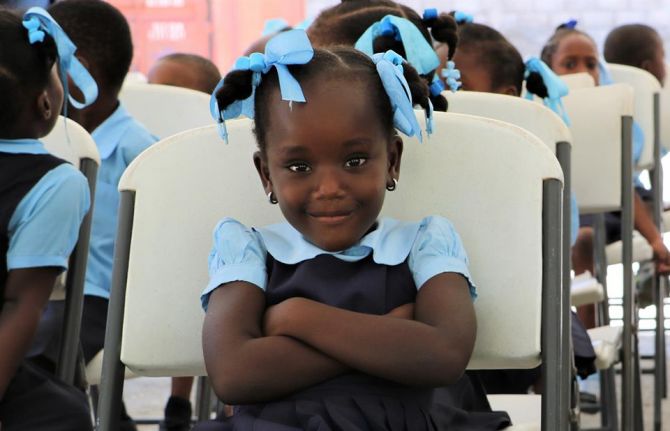
Press Release
Multilateral agencies launch a joint plan to boost global health goals
24 September 2019 24 September 2019NEW YORK, 24 September 2019—Today at the United Nations General Assembly, 12 multilateral agencies launched a joint plan to better support countries over the next 10 years to accelerate progress towards the health-related Sustainable Development Goals (SDGs).
Developed over 18 months, Stronger Collaboration, Better Health: Global Action Plan for Healthy Lives and Well-being for All outlines how a dozen multilateral health, development and humanitarian agencies will collaborate to be more efficient and provide more streamlined support to countries to deliver universal health coverage and achieve the health-related SDG targets.
Healthy people are essential for sustainable development and for ending poverty, promoting peaceful and inclusive societies as well as protecting the environment. Over the last few decades, significant gains have been made in key areas of health, but the 2030 targets will not be met without redoubled efforts.
“The plan is called, ‘Stronger Collaboration, Better Health’ for a reason,” said Dr Tedros Adhanom Ghebreyesus, Director-General of WHO. “Although collaboration is the path, impact is the destination. The release of this plan is the beginning, not the end, of that path.”
Universal health coverage is key to meeting the health-related goals and addressing health inequities. If trends continue, only up to 5 billion of the world’s population will be covered by essential health services in 2030, as highlighted in the Universal Health Coverage: Global Monitoring Report, released last week by WHO. To leave no one behind, countries need to address health inequities. Improved collaboration and coordination can help countries tackle complex health challenges and bring innovative solutions.
Together, the 12 agencies contribute nearly one-third of all development assistance to health. Under the Global Action Plan, the agencies commit to strengthening their collaboration to:
-
Engage with countries better to identify priorities, plan and implement together;
-
Accelerate progress in countries through joint actions under 7 accelerator themes, which represent common challenges for many countries and where the agencies’ mandates, expertise and resources offer solutions, namely: 1) Primary health care 2) Sustainable health financing 3) Community and civil society engagement 4) Determinants of health 5) Innovative programming in fragile and vulnerable settings and for disease outbreak responses 6) Research and development, innovation and access, and 7) Data and digital health. They will also work together to advance gender equality and support the delivery of global public goods;
-
Align by harmonizing their operational and financial strategies and policies in support of countries to increase efficiency and reduce the burden on countries; and
-
Account, by reviewing progress and learning together to enhance shared accountability.
Governments are setting priorities, developing implementation plans and intensifying efforts to achieve the health-related SDG targets. Demand from countries for the Global Action Plan is growing. “Achieving the health-related SDG goals is key for Nepal. Strengthening primary health care and enhancing data utilization for evidence-based planning and decision-making are two accelerators that will help bring us closer to achieving the SDG goals,” said Deputy Prime Minister of Nepal, Mr Upendra Yadav.
Through the Global Action Plan, the agencies will help countries deliver on international commitments in addition to the SDGs, such as those made in Astana on primary health care and at the UN General Assembly High-level Meeting on Universal Health Coverage this week in New York.
Coordinated by WHO, the Global Action Plan for Healthy Lives and Well-being for All, is in response to a call from Germany, Ghana and Norway, with support from the United Nations Secretary-General, Antonio Guterres, for more effective collaboration and coordination among global health organizations to achieve the health-related SDGs. The 12 signatory agencies to the plan are Gavi, The GFF, the Global Fund, UNAIDS, UNDP, UNFPA, UNICEF, UNITAID, UN Women, World Bank Group, WFP and WHO.
Notes to Editors
Quotes from the 12 Principals are available below.
Seth Berkley, Chief Executive Officer - GAVI, the Vaccine Alliance
“Gavi has only been able to achieve the extraordinary impact of vaccinating over three-quarters of a billion children since 2000 by working together with many of the 12 agencies as an Alliance,” said Dr Seth Berkley, CEO of Gavi, the Vaccine Alliance. “We know how much can be achieved with strong partnerships, but also how much potential there is to do more together and reach those who don’t have access to health. The right collaboration can become a lever for wider primary health care and, by extension, universal health coverage. That is why this new plan is so important, bringing together some of the biggest players in global health to create the conditions for better health and well-being for all.”
Dr Muhammad Ali Pate, Director - The Global Financing Facility for Women, Children and Adolescents (The GFF)
“The Global Financing Facility supports the Global Action Plan because it recognizes that collaboration needs to take place at the country level and must start from a country’s specific needs and priorities. Our collaboration should have two aims: accelerating progress for those left furthest behind and ensuring that all our support as development agencies is to countries to strengthen their own health and financing systems.”
Peter Sands, Executive Director - Global Fund to Fight AIDS, TB and Malaria (The Global Fund)
“Our calculus is simple: the Global Fund is a partnership, and the better we collaborate and coordinate with partners, the more impact we can have,” said Peter Sands, Executive Director of the Global Fund. “We are committed to playing our part in making the Global Action Plan a reality.”
Gunilla Carlsson, Executive Director a.i. - The Joint Programme United Nations Programme on HIV/AIDS (UNAIDS)
“The Global Action Plan must lead to greater investment in community-led efforts across the world because when communities are empowered, results follow. In the AIDS response, community engagement and ownership have resulted in an increase in the uptake of HIV prevention and treatment services, a reduction in stigma and discrimination and in the protection of human rights. Empowering communities will be central to achieving good health for all.”
Achim Steiner, Administrator - United Nations Development Programme (UNDP)
“The Global Action Plan is the kind of system-wide partnership that can help countries to accelerate progress on the 2030 Agenda for Sustainable Development and realize the promise of health and well-being for all.”
Natalia Kanem, Executive Director - United Nations Population Fund (UNFPA)
“Ensuring that health systems can deliver sexual and reproductive health services to all women and young people is integral to ensuring good health and well-being across the life course. The Plan is our collective roadmap for putting the 'universal' in universal health coverage by working together in new ways, aligned with countries' needs and priorities, to make these services accessible to all."
Henrietta Fore, Executive Director - United Nations Children's Fund (UNICEF)
“Millions of vulnerable children and young people are dying for want of medicines and health services. Strengthening primary health care means improving our ability to reach every last child,” said Henrietta Fore, UNICEF Executive Director. “We are committed to working together with governments and partners to make sure that this goal becomes a reality one day.”
Lelio Marmora, Executive Director - Unitaid
“Innovation is key to reaching global health goals. Working together, we inspire each other, we spark new ideas, and we align our efforts to overcome challenges on the ground,” Unitaid Executive Director, Lelio Marmora said. “With the Global Action Plan our work stands to make a greater impact.”
Phumzile Mlambo-Ngcuka, Executive Director - The United Nations Entity for Gender Equality and the Empowerment of Women (UN Women)
“By 2030 we want to see more women and girls with informed decision-making and control over their bodies, their health and their futures, and with access to reproductive and maternal health services. They should be living securely and prospering, free from any form of violence and benefiting from non-discriminatory legislation. The Global Action Plan can serve as a road map for collective gender-transformative action to make this a lasting reality.”
Annette Dixon, Vice President, Human Development - World Bank Group
“We see investments in health as vital for countries to build their human capital. By working better together with partner countries and holding ourselves accountable, especially at the country level, we will be able to accelerate progress towards health and equal opportunity for all.”
David Muldrow Beasley, Executive Director - World Food Programme (WFP)
“We won’t have a world without hunger unless people can get access to the services that help them get healthier. These goals go together, hand in glove. That’s why the World Food Programme is committed to working with governments and our partners around the world to make more progress toward a healthier, well-fed world.”
Dr Tedros Adhanom Ghebreyesus, Director-General - World Health Organization (WHO)
“The plan is called ‘Stronger Collaboration, Better Health’ for a reason,” said Dr Tedros Adhanom Ghebreyesus, Director-General of the WHO. “Although collaboration is the path, impact is the destination. The release of this Plan is the beginning, not the end, of that path,” he added.
UNAIDS
The Joint United Nations Programme on HIV/AIDS (UNAIDS) leads and inspires the world to achieve its shared vision of zero new HIV infections, zero discrimination and zero AIDS-related deaths. UNAIDS unites the efforts of 11 UN organizations—UNHCR, UNICEF, WFP, UNDP, UNFPA, UNODC, UN Women, ILO, UNESCO, WHO and the World Bank—and works closely with global and national partners towards ending the AIDS epidemic by 2030 as part of the Sustainable Development Goals. Learn more at unaids.org and connect with us on Facebook, Twitter, Instagram and YouTube.
Global Action Plan for Healthy Lives and Well-being for All

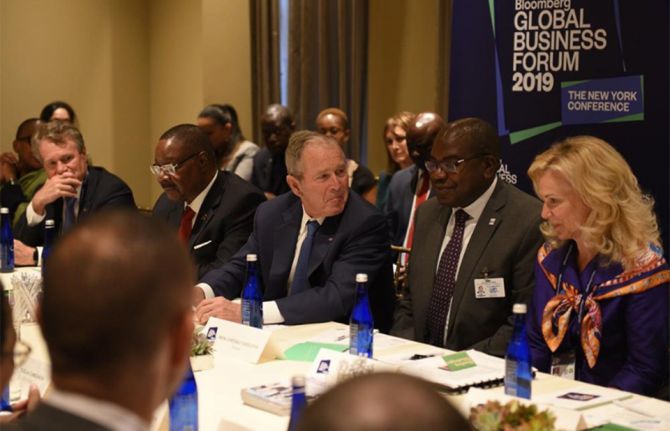
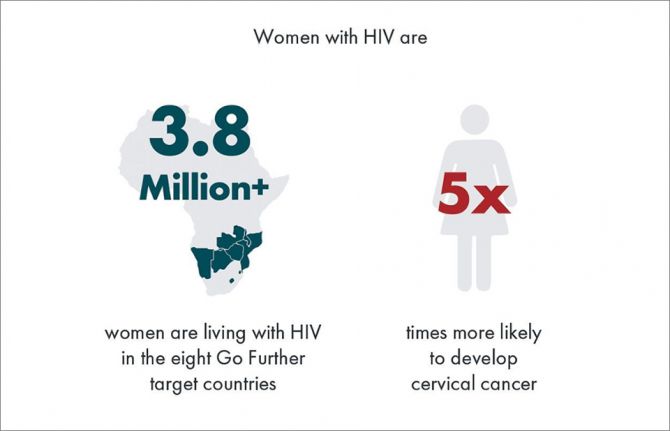
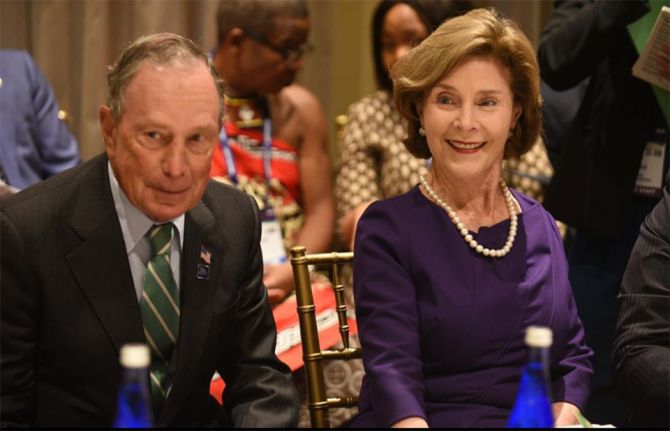
Press Release
Go Further partnership reaches over half a million HIV-positive women with cervical cancer screening in its first year
25 September 2019 25 September 2019The United States’ PEPFAR program, the George W. Bush Institute, Merck and UNAIDS are aiming to end AIDS and cervical cancer in Sub-Saharan Africa within a generation through an innovative public-private partnership
NEW YORK, 25 September 2019—On the margins of the 2019 United Nations General Assembly, former President George W. Bush and Ambassador Deborah L. Birx announced that the Go Further partnership to end AIDS and cervical cancer has reached over half a million HIV-positive women with cervical cancer screening and treated thousands of women for pre-invasive cancerous lesions in its first year. The partnership aims to reduce new cervical cancer cases by 95 percent among the estimated 3.8 million HIV-positive women who live in eight high-burden African countries.
At the Bloomberg Global Business Forum, President Bush, Mrs. Laura Bush, and Ambassador Birx met with His Majesty King Mswati III of Eswatini, The Right Honourable Dr. Thomas Thabane of Lesotho, His Excellency President Peter Mutharika of Malawi, The Honorable Michael Bloomberg, CEO of Bank of America Brian Moynihan, and others.
"We strongly believe that by helping these leaders save lives in their countries it makes the world a better place and makes America more secure," President Bush said. "We have many leaders here all of whom are taking the lead, all of whom are responsible, all of whom are measuring results. It's important for the American people to know that the results are astounding."
"The future of each of your countries depends on all of your citizens—men and women—taking care of their health," Mrs. Bush added.
“Go Further is helping women in Africa to lead longer, healthier lives,” said Ambassador Birx, M.D., United States Global AIDS Coordinator and Special Representative for Global Health Diplomacy, who leads PEPFAR. “By leveraging the robust health care delivery platforms in Africa strengthened through over $85 billion in total U.S. government global HIV/AIDS investments, we will protect millions of HIV-positive mothers, daughters, aunts, and grandmothers—who are alive and thriving with HIV treatment—from the threat of cervical cancer.”
Launched in May 2018, Go Further is an innovative public-private partnership between the U.S. President’s Emergency Plan for AIDS Relief (PEPFAR), the George W. Bush Institute (Bush Institute), the Joint United Nations Programme on HIV/AIDS (UNAIDS), and Merck (known as MSD outside of the United States and Canada). For maximum impact, the partnership focuses on reaching HIV-positive women in countries with among the highest HIV prevalence and cervical cancer incidence rates in the world.
“Go Further builds on the Bush Institute’s longstanding initiative to support women in Africa by scaling efforts to save more lives,” said Holly Kuzmich, Executive Director of the Bush Institute. “Healthy and empowered women contribute to healthier families, communities, and countries, and this partnership is proud to invest in high-burden nations to improve women’s health and economic futures, reduce suffering, and expand the reach of care.”
An estimated 100,000 women are diagnosed annually with cervical cancer in Sub-Saharan Africa. Without treatment, 62 percent of these women would be expected to die from the disease. Additionally, women who are HIV-positive are five times more likely to develop invasive cervical cancer. To address these risks, Go Further is increasing access to the human papillomavirus vaccine to prevent cervical cancer, expanding the availability of vital cervical cancer screening, and providing treatment for women most vulnerable to developing cervical cancer. With minimal additional investment, these low-cost interventions can save millions of lives and help secure global gains against HIV/AIDS.
“At Merck, we are committed to addressing the health care needs of women in the developing world and are proud to partner with PEPFAR, the Bush Institute, and UNAIDS on Go Further,” said Carmen Villar, Vice President, Social Business Innovation, Merck. “Through this partnership we are addressing cervical cancer in HIV-positive women in Sub-Saharan Africa, one of the populations most heavily impacted by cervical cancer, not only through screening and treatment but also through prevention.”
“To save a woman’s life by providing access to treatment for HIV, yet she dies from cervical cancer because she hasn’t had access to cancer screening is unacceptable,” said Gunilla Carlsson, Executive Director a.i. UNAIDS. “The Go Further partnership is critical to ensure that HIV and cervical cancer services are integrated and available to the women and girls that need them most."
The Go Further strategy builds on seven years of collaboration between PEPFAR and the Bush Institute and evolves the partnership to save more lives.
Learn more about Go Further at www.gofurther.org, and follow the partnership on Twitter, Instagram, and Facebook.
The U.S. President’s Emergency Plan for AIDS Relief
PEPFAR is the United States government’s response to the global HIV/AIDS epidemic, which has invested over $85 billion since 2003 – the largest commitment by any nation to address a single disease in history. Through the compassion and generosity of the American people, PEPFAR has saved 17 million lives, prevented millions of HIV infections, and helped transform the global HIV/AIDS response. For more information, please visit www.pepfar.gov, and connect with PEPFAR on Twitter, Facebook, Instagram and YouTube.
George W. Bush Institute
Housed within the George W. Bush Presidential Center, the George W. Bush Institute is an action-oriented, nonpartisan policy organization with the mission of developing leaders, advancing policy, and taking action to solve today’s most pressing challenges. For more information, please visit www.bushcenter.org.
UNAIDS
The Joint United Nations Programme on HIV/AIDS (UNAIDS) leads and inspires the world to achieve its shared vision of zero new HIV infections, zero discrimination and zero AIDS-related deaths. UNAIDS unites the efforts of 11 UN organizations—UNHCR, UNICEF, WFP, UNDP, UNFPA, UNODC, UN Women, ILO, UNESCO, WHO and the World Bank—and works closely with global and national partners towards ending the AIDS epidemic by 2030 as part of the Sustainable Development Goals. Learn more at unaids.org and connect with us on Facebook, Twitter, Instagram and YouTube.
Contact
PEPFARDavid Haroz
tel. +1 202 445 3269
harozd@state.gov
Bush Institute
Miriam Spradling
tel. +1 972 639 6099
mspradling@bushcenter.org
UNAIDS
tel. +41 79 514 6896 / +41 22 791 42 37
communications@unaids.org
Press centre
Download the printable version (PDF)

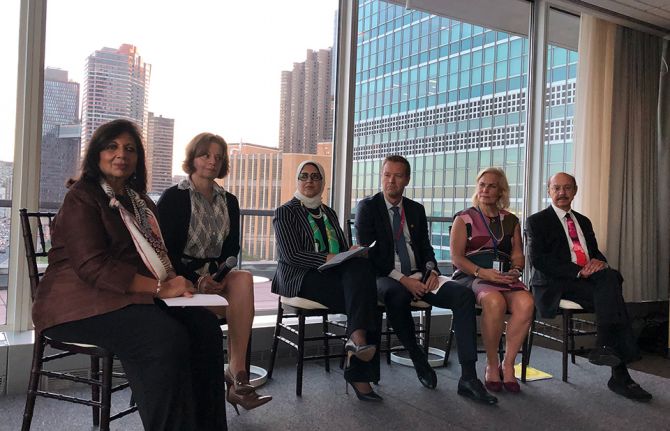
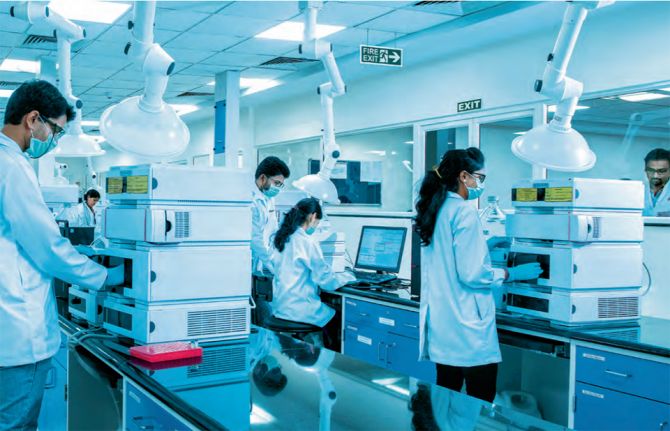
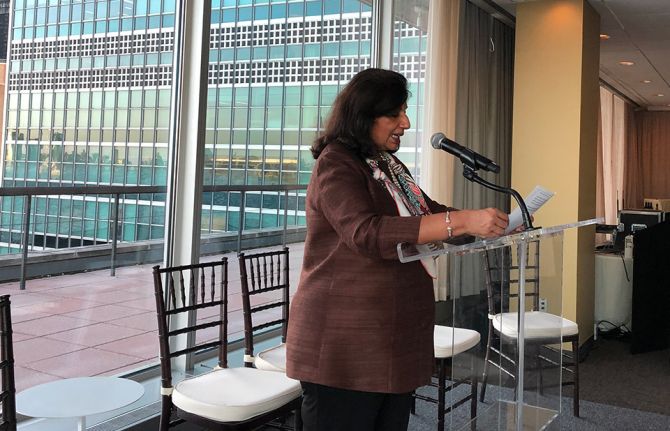
Press Release
UNAIDS welcomes announcement of significant price reduction in the cost of life-saving insulin for low- and middle-income countries
25 September 2019 25 September 2019New initiatives to support access to health care announced at the UNAIDS Health Innovation Exchange meeting on the sidelines of the United Nations General Assembly
NEW YORK/GENEVA, 25 September 2019—UNAIDS welcomes the announcement by Biocon Biologics, a biotech company, to offer recombinant human insulin (rh-insulin) at US$ 0.10 per day (for the average 40 units of insulin that is required per patient per day) to low- and middle-income countries, a reduction of 50% from current prices. This announcement was made at an event hosted by UNAIDS to promote innovation in access to health care.
“Price should not be reason to choose between life and death,” said Gunilla Carlsson, UNAIDS Executive Director, a.i. “AIDS activism has led the way in reducing the price of life-saving medicines and saving millions of lives. Today, we are glad that the universal health coverage movement is also benefitting from the lessons learned by the AIDS response.”
More than 400 million people worldwide are affected by diabetes. Evidence shows that, as they live longer, many people living with HIV and on HIV treatment are increasingly susceptible to noncommunicable diseases.
Several other companies made new commitments in support of increasing access to health care at an event organized by the UNAIDS Health Innovation Exchange on the topic of decentralization, innovation and sustainable financing, which was held in collaboration with the Center for Global Health and Development at the United Nations General Assembly in New York, United States of America.
The Wadhwani Institute for Artificial Intelligence, an independent, non-profit research institute and global hub that is developing artificial intelligence solutions for social good, has committed to establishing a centre of excellence to leverage the use of artificial intelligence for global health.
ThoughtFocus, a technology services company working on the internet of things (IoT), will provide access to its IoT platform, which is optimized to serve as an affordable, reliable and efficient platform to build and extend IoT solutions for transportation, logistics, manufacturing and utilities related to health-care services. The IoT has opened up a world of possibilities in health: when connected to the Internet, ordinary medical devices can collect invaluable additional data, give extra insight into symptoms and trends, enable remote care and generally give people more control over their lives and quality of treatment.
Zenysis, a technology company, announced that it was investing US$ 3.5 million to implement data pilots in five countries over the coming three years that will help countries to make evidence-informed decisions in rolling out universal health coverage and prioritizing investments in health systems.
“The private sector has a key role to play in advancing the Sustainable Development Goals,” said Ms Carlsson. “At UNAIDS, we believe that innovation and partnerships are the future to solving many of the basic development issues that confront us daily.”
UNAIDS
The Joint United Nations Programme on HIV/AIDS (UNAIDS) leads and inspires the world to achieve its shared vision of zero new HIV infections, zero discrimination and zero AIDS-related deaths. UNAIDS unites the efforts of 11 UN organizations—UNHCR, UNICEF, WFP, UNDP, UNFPA, UNODC, UN Women, ILO, UNESCO, WHO and the World Bank—and works closely with global and national partners towards ending the AIDS epidemic by 2030 as part of the Sustainable Development Goals. Learn more at unaids.org and connect with us on Facebook, Twitter, Instagram and YouTube.
Contact
UNAIDS Mediatel. +41 79 514 6896
bartonknotts@unaids.org
UNAIDS Media
tel. +41 22 791 42 37
communications@unaids.org
Press centre
Download the printable version (PDF)

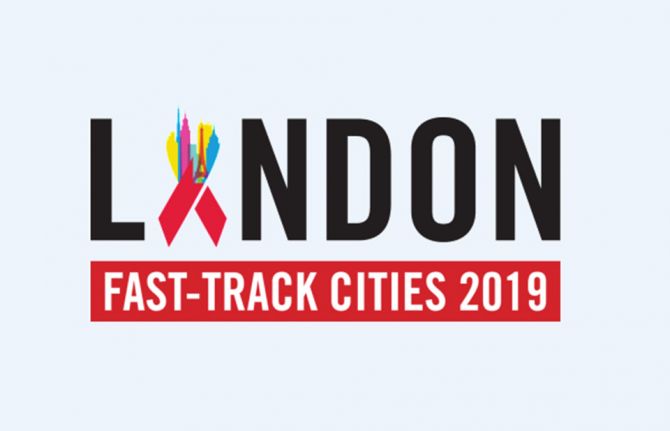
Press Release
Global leaders unite to tackle health inequalities
09 September 2019 09 September 2019Delegates from more than 300 municipalities join global Fast-Track Cities conference on urban HIV, tuberculosis, and viral hepatitis
LONDON, UNITED KINGDOM, 9 September 2019 — London Mayor Sadiq Khan today welcomed city, municipal, and global leaders to Fast-Track Cities 2019, the inaugural conference of more than 300 cities and municipalities prioritizing their responses to urban HIV, tuberculosis (TB), and viral hepatitis. Speaking at the conference, Mayor Khan highlighted the problem of health inequalities across the world, as well as the need to end the stigma still associated with HIV. He also reiterated the bold ambition for London to achieve the target of no new HIV infections, deaths, and stigma by 2030.
“I’m honoured that city and health leaders from all around the world are uniting today in London. The first international gathering of Fast-Track Cities will be a truly historic event in our fight against HIV and health inequalities,” said Mayor Khan. “I’m also proud of the work London is doing to tackle HIV and inequality, and am pleased that we will be able to share our knowledge and experience with others. But despite our progress, there is still much more to be done as too many people continue to catch the virus. To truly end all new cases of HIV in London, it’s high time the Government made PrEP available via the NHS for all those who need it. No ifs, no buts, and no more pilots – we know it works, it stops the spread of infection and saves money in the long run.”
More than half of the world’s population currently lives in urban centers where the risk of contracting HIV, TB, and hepatitis is significantly higher due to urban dynamics such as social behavior, migration, unemployment, and social and economic inequalities. However, cities and municipalities also have inherent advantages and offer important opportunities to accelerate health responses and take transformative action to ensure that equitable access to health services is available to everyone.
“We have seen that for an effective response to HIV it is critical to remove inequalities, power imbalances, marginalization, and discrimination,” said Gunilla Carlsson, Executive Director a.i., of UNAIDS, one of four core partners of the Fast-Track Cities initiative. “Cities must use their advantages to leverage innovation, create social transformation, and build equitable societies that are inclusive, responsive, resilient, and sustainable,” she added.
Organized by the International Association of Providers of AIDS Care (IAPAC), in collaboration with the Joint United Nations Programme on HIV/AIDS (UNAIDS) and other partners, the Fast-Track Cities 2019 conference is being held from September 9-11, 2019, at the Barbican Centre. The conference’s aim is to highlight successes achieved across the Fast-Track Cities network, address cross-cutting challenges faced by local stakeholders, and share best practices in accelerating urban AIDS responses, inclusive of co-infectious diseases such as TB and viral hepatitis. The conference features plenary sessions, panel discussions, and abstract presentations by representatives from more than 300 Fast-Track Cities.
“Health inequalities are preventing people living with HIV, TB, and viral hepatitis, notably from disenfranchised and minority ethnic communities, from accessing the services they need to live longer, healthier lives," said Dr. José M. Zuniga, President/CEO of the International Association of Providers of AIDS Care (IAPAC), one of the core partners of the Fast-Track Cities initiative and the conference’s organizer. “We are convening in London because the city’s high level of political commitment, public health leadership, support from clinical and service providers, and engagement with affected communities have enabled the city to surpass the Fast-Track Cities’ programmatic HIV targets. We are here to shine a light on London’s efforts to reduce and eliminate health inequalities that contravene the principles of social justice.”
When London joined the Fast-Track Cities initiative in January 2018, the city had already met the UNAIDS 90-90-90 targets, which are defined as 90% of people living with HIV knowing their status, 90% of people who know their status accessing HIV treatment, and 90% of people accessing HIV treatment achieving viral suppression. FTC London, a pan-city group of stakeholders steering the city’s Fast-Track Cities engagement, has made outreach to the black, Asian, and minority ethnic (BAME) community a priority in their “London Getting to Zero” strategy.
The “High-Level Panel on Health Inequalities,” which was the official opening of the Fast-Track Cities 2019 conference, included the following elected officials:
- Kostas Bakoyannis (Mayor, Athens, Greece)
- Josefina Belmonte (Mayor, Quezon City, Philippines)
- Winston Ennis (Deputy Mayor, Kingston, Jamaica)
- Simone Kukenheim (Deputy Mayor, Amsterdam, Netherlands)
- Fernando Medina (Mayor, Lisbon, Portugal)
- Svante Myrick (Mayor, Ithaca, NY, USA)
- Robb Pitts (Chairman, Fulton County, Atlanta, GA, USA)
- Mykola Povoroznyk, (First Deputy Mayor, Kyiv, Ukraine)
- Gennadiy Trukhanov (Mayor, Odesa, Ukraine)
In addition to IAPAC’s Dr. Zuniga, and UNAIDS’ Ms. Carlsson, several global public health leaders also participated in the “High Level Panel on Health Inequalities,” including:
- Amb. Deborah L. Birx (US Global AIDS Coordinator, PEPFAR)
- Cary James (CEO, World Hepatitis Alliance)
- Suvanand Sahu (Deputy Executive Director, Stop TB Partnership)
- Maimunah Mohd Sharif (Executive Director, UN-Habitat)
- Trevor Stratton (Board Member, GNP+)
- Marijke Wijnroks (Chief of Staff, Global Fund to fight AIDS, TB and Malaria)
The panel was moderated by UK-based broadcaster and former BBC journalist Henry Bonsu.
Press passes for Fast-Track Cities 2019 are available by contacting IAPAC Director of Communications Zack Pesavento at zpesavento@iapac.org.
The conference program is available at: https://www.iapac.org/conferences/fast-track-cities/#program
About the International Association of Providers of AIDS Care (IAPAC)
With more than 30,000 members globally, IAPAC is the largest association of clinicians and allied health professionals working to end AIDS as a public health threat by 2030. For more information about IAPAC and our global activities, please visit: https://www.iapac.org/
About the Fast-Track Cities Initiative
Fast-Track Cities is a global partnership between almost 300 cities and municipalities, the International Association of Providers of AIDS Care (IAPAC), the Joint United Nations Programme on HIV/AIDS (UNAIDS), the United Nations Human Settlements Programme (UN-Habitat), and the City of Paris that are collaborating to end the epidemics of HIV, TB, and viral hepatitis by 2030. The initiative was launched on World AIDS Day 2014 in Paris. For more information please visit: https://www.iapac.org/fast-track-cities/about-fast-track/
UNAIDS
The Joint United Nations Programme on HIV/AIDS (UNAIDS) leads and inspires the world to achieve its shared vision of zero new HIV infections, zero discrimination and zero AIDS-related deaths. UNAIDS unites the efforts of 11 UN organizations—UNHCR, UNICEF, WFP, UNDP, UNFPA, UNODC, UN Women, ILO, UNESCO, WHO and the World Bank—and works closely with global and national partners towards ending the AIDS epidemic by 2030 as part of the Sustainable Development Goals. Learn more at unaids.org and connect with us on Facebook, Twitter, Instagram and YouTube.
